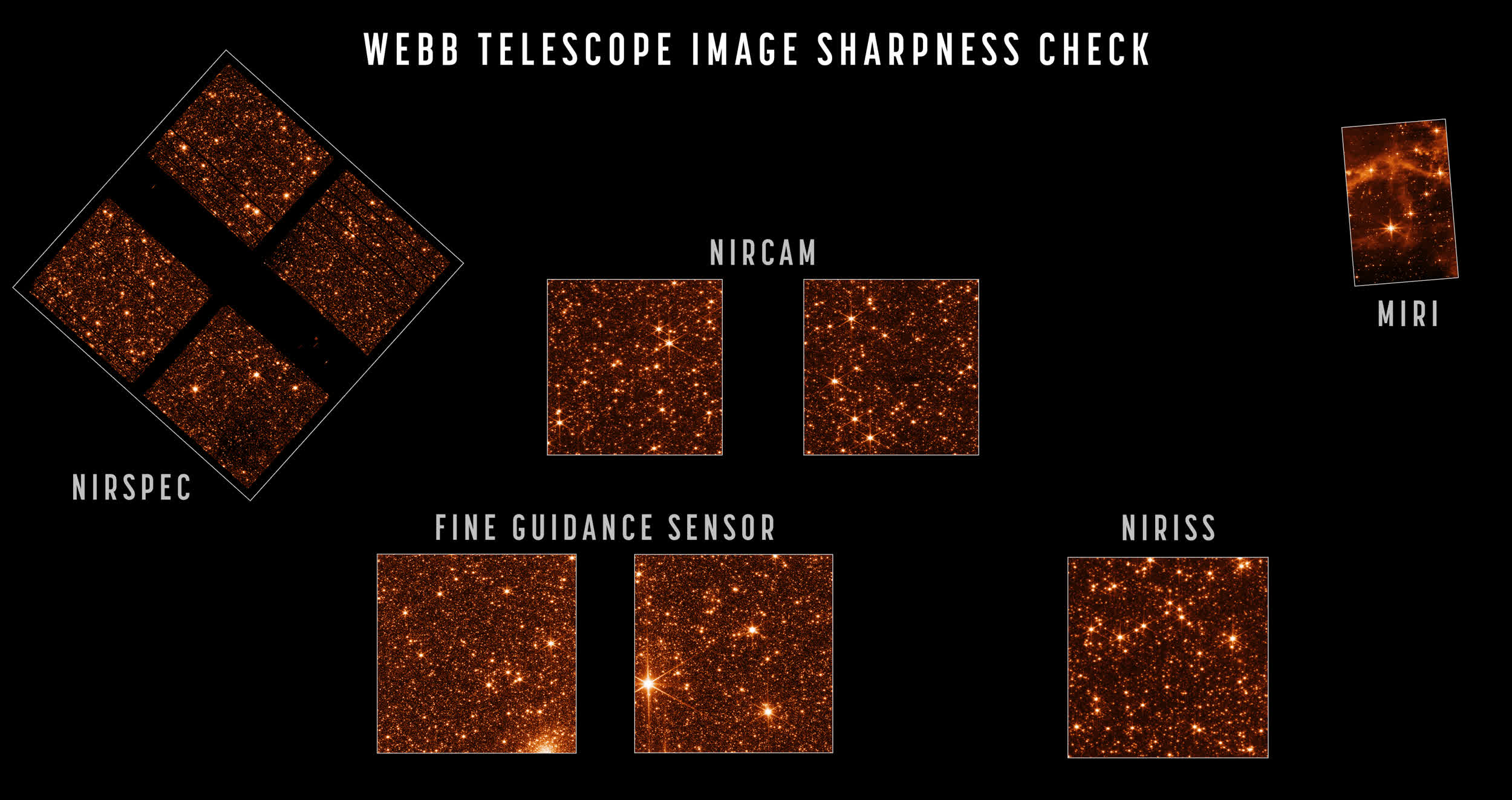Highly anticipated: NASA said the optical performance of the scope continues to exceed their most optimistic predictions. In fact, the agency said the image quality is "diffraction-limited," meaning that the fineness is as good as physically possible given Webb's size.
NASA's James Webb Space Telescope has successfully completed the seventh and final stage of telescope alignment and is ready to move to the science instrument commissioning phase.
In announcing the milestone, the space agency said it has confirmed that Webb is capable of capturing crisp, well-focused images with each of its four onboard science instruments: the near-infrared camera (NIRCam), the near-infrared spectrograph (NIRSpec) and the fine guidance sensor / near infrared imager, the Mid-Infrared Instrument (MIRI) and the slitless spectrograph (FGS/NIRISS).
In other words, Webb's mirrors are directing fully focused light from space into each instrument, and each instrument is capturing images using the light delivered to them.
Scott Acton, Webb wavefront sensing and controls scientist at Ball Aerospace, is already excited about what Webb is delivering. "These images have profoundly changed the way I see the universe. We are surrounded by a symphony of creation; there are galaxies everywhere! It is my hope that everyone in the world can see them."
Webb is now ready to move to the science instrument commissioning phase. Specialists have arrived at the Mission Operations Center at the Space Telescope Science Institute in Baltimore to oversee the work. Barring any unforeseen issues, commissioning should take roughly two months to complete.
Scientific operations are expected to begin this summer.
